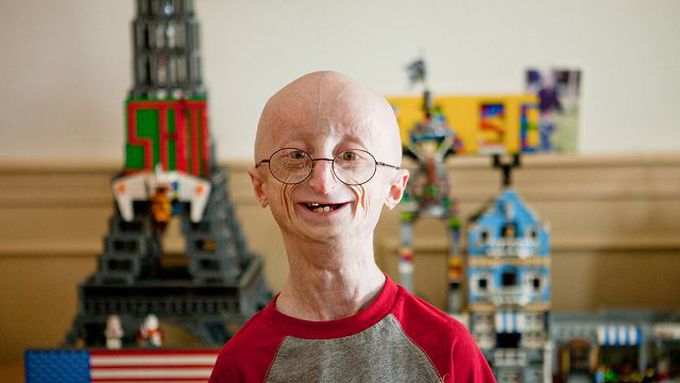


# Progeria
This genetic disorder is as rare as it is severe. The classic form of the disease, called Hutchinson-Gilford Progeria, causes accelerated aging . Most children who have progeria essentially die of age-related diseases around the age of 13, but some can live into their 20s. Death is typically caused by a heart attack or stroke. It affects as few as one per eight million live births. The disease is caused by a mutation in the LMNA gene, a protein that provides support to the cell nucleus. Other symptoms of progeria include rigid (sclerotic) skin, full body baldness (alopecia), bone abnormalities, growth impairment, and a characteristic “sculptured” nasal tip. Progeria is of great interest to gerontologists who hope connect genetic factors to the aging process .

